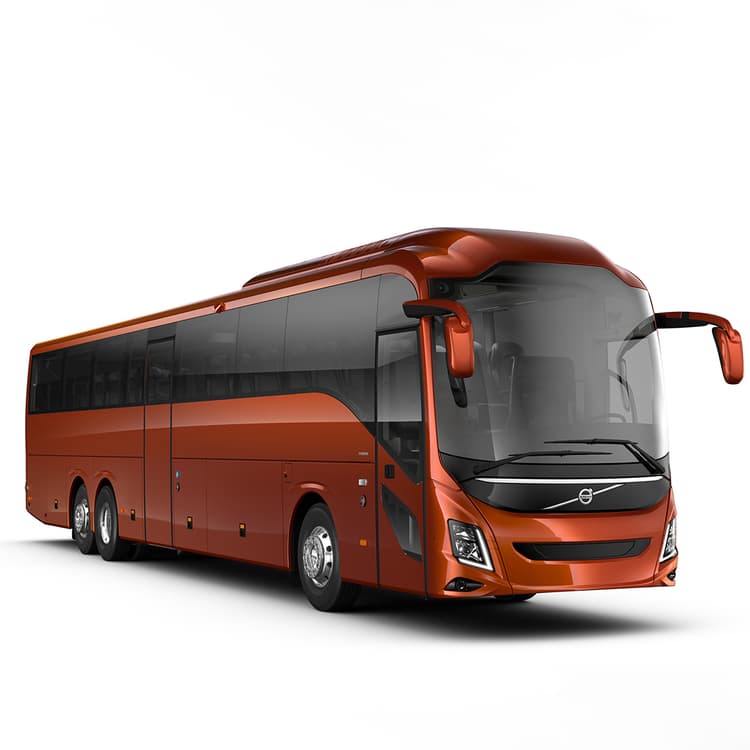Leh-Ladakh, sometimes called the “Land of High Passes” is a beautiful and remote place in the northernmost part of India. It’s a part of the Union Territory of Jammu and Kashmir and is situated in the mighty Himalayas. It’s famous for its dramatic landscapes, peaceful monasteries and rich culture, so it’s a paradise for adventurers, peace seekers and spiritual people.
Situated at high altitude, Leh-Ladakh is a cold desert with rough terrain, towering peaks and vast barren valleys. The elevation here ranges from 9,800 feet to over 25,000 feet above sea level, making it one of the highest inhabited places in the world. The climate is extreme with freezing winters and cool summers. The best time to visit is between May to September when the weather is mild and the roads are open.
Leh-Ladakh is also strategically located near the borders of China (Tibet) and Pakistan, adding to its geographical importance. The region is famous for its snow capped mountains, crystal clear lakes and high altitude passes, which attracts adventurers, nature lovers and spiritual seekers from all over the world. Whether you’re visiting ancient monasteries, trekking through beautiful valleys or simply soaking in the beauty, Leh-Ladakh is an experience you will never forget.
Best Time to Visit Leh-Ladakh
The best time to visit Leh-Ladakh is from April to October, when the weather is pleasant and accessible. During these months, the region emerges from its harsh winter, offering clear skies, stunning landscapes, and ideal conditions for exploration.
April to June: Spring brings mild temperatures (5°C to 20°C), blooming flowers, and snow-capped peaks. It’s perfect for sightseeing, monastery visits, and early-season treks.
July to September: Summer (10°C to 25°C) is the peak tourist season. Roads like the Manali-Leh Highway are open, and activities like trekking, rafting, and motorcycling are in full swing. The famous Hemis Festival also takes place during this time.
October: Autumn offers crisp weather, fewer crowds, and golden landscapes, making it ideal for photography and serene travel.
How to Reach Leh Ladakh
Reaching Leh-Ladakh, a remote and high-altitude region in northern India, is an adventure in itself. Here’s a detailed guide on how to get there:
By Air - Kushok Bakula Rimpochee Airport (Leh) is the nearest airport, well-connected to major Indian cities like Delhi, Mumbai, and Srinagar.
By Train: Nearest railway station is Jammu Tawi, from where you can hire a cab or take a bus to Leh.
By Road - Leh is accessible by road via two scenic highways: Manali-Leh Highway (480 km) and Srinagar-Leh Highway (420 km). It opens from June to September. The Srinagar route, open from May to October, is relatively easier and passes through Sonmarg, Zoji La, Dras, and Kargil, with a halt at Kargil. Both routes offer breathtaking landscapes but remain closed in winter due to heavy snowfall.
Tip: Acclimatize for at least 24 hours after arrival to avoid altitude sickness.
Temples & Monasteries in Leh-Ladakh
Leh-Ladakh is a spiritual and cultural hub, home to numerous Buddhist monasteries (gompas) and a few Hindu temples. These sacred sites are not only places of worship but also repositories of art, history, and tradition. Here’s a list of the most famous temples and monasteries in Leh-Ladakh:
Monasteries in Leh-Ladakh
Hemis Monastery - The largest and wealthiest monastery in Ladakh, known for the annual Hemis Festival. Located 45 km from Leh.
Thiksey Monastery - A stunning 12-story complex resembling the Potala Palace in Lhasa, Tibet. Located 19 km from Leh.
Diskit Monastery - The oldest and largest monastery in Nubra Valley, famous for its giant statue of Maitreya Buddha. Located 120 km from Leh.
Lamayuru Monastery - One of the oldest monasteries in Ladakh, known as the "Moonland Monastery" due to its unique landscape. Located 127 km from Leh.
Alchi Monastery - UNESCO World Heritage Site, famous for its ancient wall paintings and architecture. Located 70 km from Leh.
Spituk Monastery - Known for its annual Gustor Festival and a statue of Kali. Located 8 km from Leh.
Phyang Monastery - A 16th-century monastery known for its ancient artifacts and the Phyang Tsedup Festival. Located 15 km from Leh.
Shey Monastery - Home to a giant 12-meter-high Shakyamuni Buddha statue. Located 15 km from Leh.
Stakna Monastery - A small but picturesque monastery located on a hilltop. Located 25 km from Leh.
Matho Monastery - Known for its Oracle Matho Nagrang Festival and stunning views of the Indus Valley. Located 26 km from Leh.
Rizong Monastery - A serene monastery known for its strict monastic rules. Located 73 km from Leh.
Likir Monastery - Famous for its giant Buddha statue and beautiful murals. Located 52 km from Leh.
Sankar Monastery - A small but significant monastery located near Leh town. Located 3 km from Leh.
Chemrey Monastery - Known for its ancient scriptures and the annual Chemrey Angchok Festival. Located 40 km from Leh.
Takthok Monastery - The only Nyingma monastery in Ladakh, built around a cave. Located 46 km from Leh.
Temples in Leh-Ladakh
Shanti Stupa - A white-domed Buddhist stupa offering panoramic views of Leh and the surrounding mountains. Located 5 km from Leh.
Kali Mata Temple (Spituk) - A Hindu temple dedicated to Goddess Kali, located near Spituk Monastery. Located 8 km from Leh.
Gurudwara Pathar Sahib - A Sikh gurudwara built in memory of Guru Nanak Dev Ji, located on the Leh-Kargil Highway. Located 25 km from Leh.
Magnetic Hill Temple - A small temple located near the famous Magnetic Hill. Located 30 km from Leh.
Highest Motorable Road in Leh-Ladakh
The highest motorable road in Ladakh (and in the world) is the Umling La Pass, which stands at an astonishing altitude of 19,024 feet (5,800 meters) above sea level. This incredible feat of engineering was officially opened in 2017 and is part of the Border Roads Organisation (BRO) project, connecting remote villages in Ladakh.
Umling La Pass
Located in the Indo-Tibetan border region, it connects Chisumle and Dempang villages in Ladakh, 19,024 feet (5,800 meters), making it the highest motorable road in the world. The road is well-maintained but challenging due to its high altitude and rugged terrain. It serves as a strategic route for the Indian Army and provides connectivity to remote villages, improving accessibility and tourism.
Other High-Altitude Motorable Roads in Ladakh:
While Umling La is the highest, Ladakh is home to several other high-altitude motorable roads that are famous among adventurers:
Khardung La Pass (17,582 feet / 5,359 meters) - Often mistakenly called the "world's highest motorable road," it remains one of the most iconic passes in Ladakh. Connects Leh to the Nubra Valley.
Chang La Pass (17,590 feet / 5,360 meters) - Known as the "Gateway to Pangong Lake," it is one of the highest motorable passes in the region. Located on the Leh-Pangong Lake route.
Tanglang La Pass (17,480 feet / 5,328 meters) - Located on the Manali-Leh Highway, it is one of the highest passes on this route.
Marsimik La Pass (18,314 feet / 5,582 meters) - A lesser-known but extremely high pass near Pangong Lake, accessible only with special permits.
Safety Consideration for your Leh-Ladakh Road/Bike Trip
A road or bike trip to Leh-Ladakh is an adventure of a lifetime, but it requires careful planning and safety precautions due to the region's high altitude, rugged terrain, and unpredictable weather. Here are essential safety considerations to ensure a safe and enjoyable journey:
1. Acclimatization
Altitude Sickness: Leh-Ladakh is a high-altitude region (above 11,000 feet). Spend at least 1-2 days in Leh to acclimatize before heading to higher areas.
Symptoms: Watch for headaches, nausea, dizziness, or breathlessness. Descend immediately if symptoms worsen.
Hydration: Drink plenty of water and avoid alcohol.
2. Vehicle and Bike Preparation
Vehicle Condition: Ensure your car or bike is in excellent condition. Check the engine, brakes, tires, and suspension.
Spare Parts: Carry spare tires, tubes, and basic tools for repairs.
Fuel: Fuel stations are scarce, so carry extra fuel in jerry cans (if permitted).
3. Road Conditions
Challenging Terrain: Roads can be rough, with gravel, potholes, and water crossings. Drive cautiously, especially on high-altitude passes.
Landslides: Be prepared for landslides, particularly on the Manali-Leh and Srinagar-Leh highways.
Snow and Ice: High-altitude passes like Khardung La and Chang La may have icy patches, even in summer.
4. Weather Preparedness
Unpredictable Weather: Temperatures can drop suddenly, and snow or rain can occur at any time.
Clothing: Pack warm layers, waterproof jackets, gloves, and sturdy boots.
Check Forecasts: Monitor weather updates before starting your journey.
5. Permits and Documentation
Inner Line Permits (ILP): Obtain permits for restricted areas like Nubra Valley, Pangong Lake, and Tso Moriri.
ID Proofs: Carry original and photocopies of your ID proofs, vehicle documents, and permits.
6. Health and Safety Gear
First Aid Kit: Carry a well-stocked kit with medicines for altitude sickness, pain relief, and stomach issues.
Oxygen: Portable oxygen cylinders can be lifesavers in emergencies.
Emergency Contacts: Save numbers for local authorities, hospitals, and your accommodation.
7. Riding and Driving Tips
Speed: Drive slowly and cautiously, especially on winding roads and high-altitude passes.
Overtaking: Avoid overtaking on narrow roads and blind curves.
Breaks: Take frequent breaks to rest and acclimatize.
8. Communication and Navigation
Network Connectivity: Mobile networks are limited. Carry a satellite phone or inform someone about your itinerary.
Maps: Download offline maps or carry physical maps, as GPS may not always work.
9. Environmental Responsibility
Waste Management: Carry trash bags and avoid littering.
Respect Nature: Do not disturb wildlife or damage the fragile ecosystem.
10. Travel Insurance
Coverage: Ensure your insurance covers high-altitude travel, medical emergencies, and vehicle breakdowns.
NOTE - Numerous factors such as weather, road conditions, the physical ability of participants etc. may cause itinerary change. We reserve the rights to change any schedule in the interest of safety, comfort and general wellbeing.


























